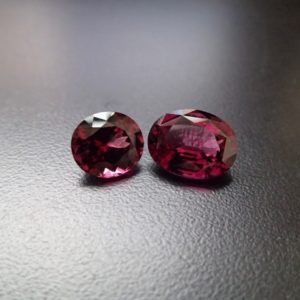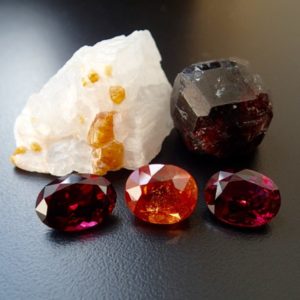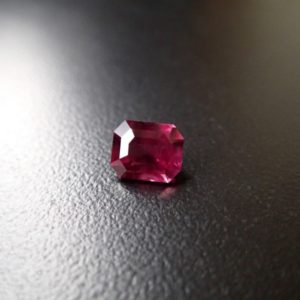Garnet
Our Garnet Collection
Treatment / Enhancement
There are no known treatments or synthetics for garnet. It is usually imitated with glass or synthetic red corundum. The greens may be imitated with green glass and garnet doublets.
Origin
Garnet comes in every color but blue.
Pyrope. Red. Is mostly mined in Arizona. It is commonly referred to as “ant hill garnet” because the ants in the Arizona desert kick up the garnet as they build their huge mounds. The stones are rarely larger than a carat since it gets increasingly darker in color the larger it is.
Almandine. Red to violet. Desposits are found in Brazil, India, Madagascar, and Sri Lanka.
Rhodolite. Red to violet. These stones are found in India, Sri Lanka, East Africa and Madagascar.
Spessartite. Orange to orange-brown. Deposits are found in Burma, Brazil, China, Kenya, Madagascar, Sri Lanka, Tanzania, and Namibia.
Tsavorite. Green, yellow, colorless. Tsavorite is mostly found in Kenya.
Demantoid. Green. Demantoid is the most valuable garnet. The name means “diamond like luster.” The most famous deposits were in Russia, however recent findings have been discovered in Zaire.
Folklore
4000 years ago ancient Egyptians mined emeralds, even Cleopatra was an avid collector. Emeralds were believed by these ancient civilizations to empower the owner with insight into the future. It was also regarded as an amulet for good fortune.


Care
Garnets are generally very durable and can be used in the ultrasonic or steam cleaner except for the demantoid. Demantoid is fragile and must be treated with care. All garnets will abrade one another if stored in a stone paper with no protection. It is advisable to always separate garnets to avoid unnecessary wear at the facet joints.
